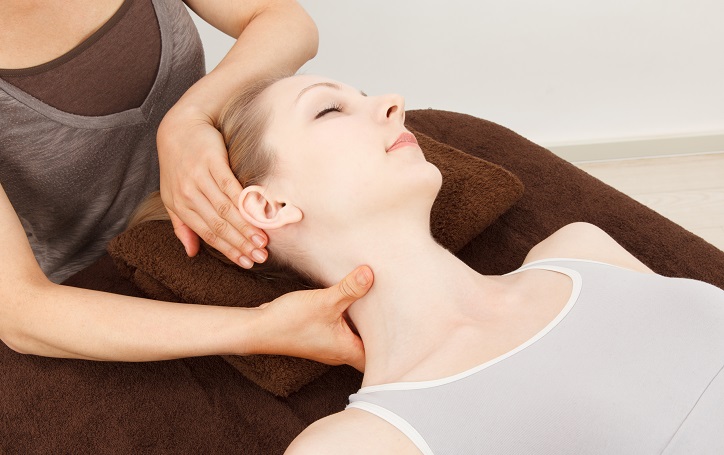

Fountain Valley Urgent Care Permanently Closed. We’re Here to Care for You at Our Other Locations.

Tension headaches – from muscle tightness in the neck, shoulders, and scalp – can be mildly annoying or frustratingly painful. They tend to occur during long and stressful days, and can be brief or last up to several hours, depending on how tired or “keyed up” you are. Some of the most common symptoms include:
Can You Get Rid of Tension Headaches on Your Own? Lifestyle choices can make tension headaches more likely, by allowing stress to accumulate in our muscles and posture, or by neglecting stress reduction. Try these 6 simple habit adjustments:
1. Document Your Headaches  If you have frequent tension headaches, keep a record or log to document when they occur, how long they last, and whether any activities or foods seem to trigger them. Do they only happen during or after work, or after meeting specific people? Write down as many details as possible.
If you have frequent tension headaches, keep a record or log to document when they occur, how long they last, and whether any activities or foods seem to trigger them. Do they only happen during or after work, or after meeting specific people? Write down as many details as possible.
If you seek medical attention, your notes could help the doctor determine what is triggering the headaches, and how best to treat them.
2. Let It Go, Let It Go…  Stress is one of the biggest triggers for tension headaches, and is no fun in itself. It sounds easy to say and hard to do, but letting go of distressing thoughts is a big part of stress reduction. Unless you’re facing a tiger or an avalanche, the stressful event is rarely more damaging than your active worrying about the event, its aftermath, its possible effect on your job or relationships, etc. Self-induced negative thoughts and worries tighten the muscles and hunch the posture, leading to chronic muscle tightness that can trigger headaches.
Stress is one of the biggest triggers for tension headaches, and is no fun in itself. It sounds easy to say and hard to do, but letting go of distressing thoughts is a big part of stress reduction. Unless you’re facing a tiger or an avalanche, the stressful event is rarely more damaging than your active worrying about the event, its aftermath, its possible effect on your job or relationships, etc. Self-induced negative thoughts and worries tighten the muscles and hunch the posture, leading to chronic muscle tightness that can trigger headaches.
Take a breath. Regain a sense of perspective and “unclench” from the negativity for a while.
3. Meditate  Studies have shown that meditation can lower blood pressure, stress, and irritability, as well as enhance your ability to focus and feel more “in control.” Spending time every day in quiet meditation can also strengthen the immune system, and reduce the tightness in the neck and shoulders that can trigger tension headaches.
Studies have shown that meditation can lower blood pressure, stress, and irritability, as well as enhance your ability to focus and feel more “in control.” Spending time every day in quiet meditation can also strengthen the immune system, and reduce the tightness in the neck and shoulders that can trigger tension headaches.
There are different kinds of meditation, including Zen, Tibetan, and Transcendental Meditation (TM), but meditation practices are usually heavy on technique and getting helpful results, not dogma, and can be practiced regardless of your religious affiliation. There are numerous books and videos to help get started, and personal training is available in group or individual classes through many gyms, yoga centers, and TM instructors.
4. Move Your Body ? Yoga  If you’re not moving your body, you might be spending too much of your day creating negative thoughts and worries; ANY kind of regular movement and exercise will be an improvement. But yoga – classically, Hatha yoga; there are different types with different activity levels -- combines stretching, meditation, and breathing techniques to calm the body, tone the muscles and reduce stress and tension.
If you’re not moving your body, you might be spending too much of your day creating negative thoughts and worries; ANY kind of regular movement and exercise will be an improvement. But yoga – classically, Hatha yoga; there are different types with different activity levels -- combines stretching, meditation, and breathing techniques to calm the body, tone the muscles and reduce stress and tension.
It is an effective way to reduce back, neck, and shoulder pain, and to reduce the muscular tightness that can lead to tension headaches. Yoga can also be combined with an existing exercise program as an effective warm up, cool down, or active recovery day.
5. Massage Sometimes, having a masseuse move YOU can accomplish things that you moving yourself cannot. Massage therapy, especially cranial and neck massage, can soften tight and stiff muscles. It can improve blood flow to better bring freshly oxygenated blood and nutrients to tissues that may be under stress, or damaged in some way.
Massage therapy, especially cranial and neck massage, can soften tight and stiff muscles. It can improve blood flow to better bring freshly oxygenated blood and nutrients to tissues that may be under stress, or damaged in some way.
Theoretically, as massage brings in oxygen and nutrients, it also carries away toxins in a more accelerated way than normal circulation does. Massage often leads to immediate relief of stress and tension in the head, neck and shoulder muscles, which translates into relief of tension headache discomfort.
6. Give a Hoot, Don’t Pollute (Yourself) Making positive lifestyle changes can impact the frequency and severity of tension headaches. If you smoke, quit; if you favor processed foods, go for whole, fresh foods, instead. As noted above, exercise is also beneficial, whether it’s yoga or something more active like sports, martial arts, or strength training. Not only does it relieve stress, it improves heart and lung function, while also releasing endorphins that can elevate a person"s mood.
As noted above, exercise is also beneficial, whether it’s yoga or something more active like sports, martial arts, or strength training. Not only does it relieve stress, it improves heart and lung function, while also releasing endorphins that can elevate a person"s mood.
Share Your Valuable Thought